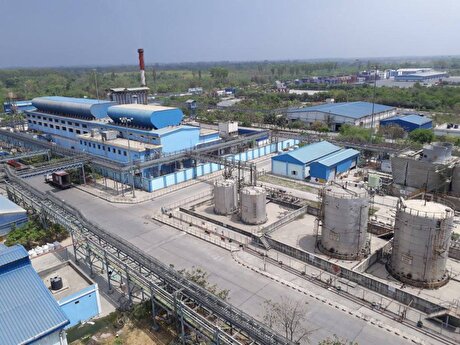
China’s Russia, Saudi crude imports stay high in March

Crude imports from Russia were 1.65mn b/d in March, down slightly from 1.71mn b/d in January-February but up by 31pc from a year earlier, detailed figures from China's general administration of customs (GAC) show. The year-on-year increase was driven by buying from Beijing-registered firms – which are typically China's big, state-controlled oil companies – which imported 534,000 b/d from Russia last month, up by 79pc from 298,000 b/d a year earlier. The increase accounted for almost 60pc of the total rise in China's Russian imports over the period.
Imports by the Beijing-based companies were also up from 486,000 b/d in January-February, as the companies took advantage of lower prices to build stocks. Russian supplies to Shandong province, home to most of China's independent refineries, were up by 11.8pc from a year earlier to 335,000 b/d but down from 429,000 b/d in January-February. Some Shandong independents had almost used up their crude import quotas last month, limiting buying.
Saudi Arabia remained China's top crude supplier in March, although deliveries fell slightly to 1.7mn b/d from 1.725mn b/d a year earlier and 1.79mn b/d in January-February.
Last month's Saudi imports were mainly underpinned by firm buying interest from private-sector firms Hengli and Rongsheng. The companies lifted crude runs at their 400,000 b/d refineries at Dalian's Changxing island and Zhoushan respectively to 95-100pc in March from about 90pc in February. This is well above crude throughputs at most state-controlled refineries.
The Hengli petrochemical terminal and the Brightoil petroleum storage facility in Zhoushan, which serves Rongsheng's refinery, took delivery of 780,000 b/d of imported crude in March, according to data from oil analytics firm Vortexa, including 11 very large crude carriers (VLCCs). Imports comprised around 436,000 b/d of Saudi Arab Medium and Arab Heavy crude, up from an average of 390,000 b/d in January-February. Another 344,000 b/d of crude from Iraq, Kuwait, UAE and Russia arrived at the two berths, as the refiners looked for alternatives to Saudi supplies. Most, but not all, of this crude was likely destined for the two refineries.
Iraq, Angola and Brazil were the next biggest crude suppliers to China last month. Iraq supplied 1.32mn b/d, up by 45.8pc on a year earlier and slightly higher than 1.29mn b/d in January-February. Imports from Angola were 940,000 b/d, up by 30.2pc from a year earlier and by 22.4pc from January-February. Deliveries from Brazil rose by 9.7pc from a year earlier to 763,000 b/d, although this was down from 931,000 b/d in January-February.
Norwegian crude imports increased to 305,000 b/d last month from 262,000 b/d in January-February and were up from just 8,500 b/d in March 2019.
Deliveries from Malaysia, which has served as a ship-to-ship transit point for imports from other sources, fell to 248,000 b/d last month from 436,000 b/d in January-February, but were still well above levels of 120,000 b/d a year earlier.
Imports from Iran and Venezuela continued to fall amid political pressure. There were no imports from Venezuela last month or in the first quarter, compared with 250,000 b/d in March 2019. Imports from Iran plunged by 88.9pc from a year earlier to 60,000 b/d in March and were down from 81,000 b/d in January-February. And China did not take delivery of any crude from the US again last month, despite Beijing reducing import tariffs on US crude to 2.5pc from 5pc effective 14 February.
China's total crude imports were 9.68mn b/d in March, up by 4.5pc from a year earlier but down from an average of 10.47mn b/d in January-February, the GAC said, confirming preliminary data released earlier this month.


Hindustan Zinc to invest $438 million to build reprocessing plant

Gold price edges up as market awaits Fed minutes, Powell speech

Glencore trader who led ill-fated battery recycling push to exit

UBS lifts 2026 gold forecasts on US macro risks

Emirates Global Aluminium unit to exit Guinea after mine seized

Roshel, Swebor partner to produce ballistic-grade steel in Canada

Iron ore price dips on China blast furnace cuts, US trade restrictions

South Africa mining lobby gives draft law feedback with concerns

EverMetal launches US-based critical metals recycling platform

Barrick’s Reko Diq in line for $410M ADB backing

Gold price gains 1% as Powell gives dovish signal

Electra converts debt, launches $30M raise to jumpstart stalled cobalt refinery

Gold boom drives rising costs for Aussie producers

Vulcan Elements enters US rare earth magnet manufacturing race

Trump raises stakes over Resolution Copper project with BHP, Rio Tinto CEOs at White House

US seeks to stockpile cobalt for first time in decades

Trump weighs using $2 billion in CHIPS Act funding for critical minerals

Nevada army depot to serve as base for first US strategic minerals stockpile

Emirates Global Aluminium unit to exit Guinea after mine seized

Barrick’s Reko Diq in line for $410M ADB backing

Gold price gains 1% as Powell gives dovish signal

Electra converts debt, launches $30M raise to jumpstart stalled cobalt refinery

Gold boom drives rising costs for Aussie producers

Vulcan Elements enters US rare earth magnet manufacturing race

US seeks to stockpile cobalt for first time in decades

Trump weighs using $2 billion in CHIPS Act funding for critical minerals

Nevada army depot to serve as base for first US strategic minerals stockpile

Tailings could meet much of US critical mineral demand – study

















